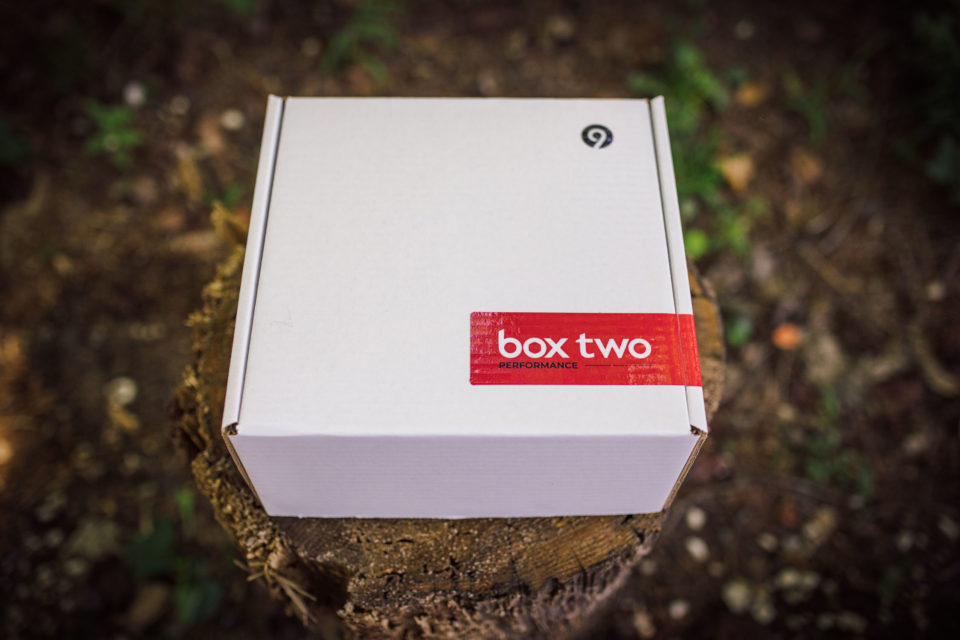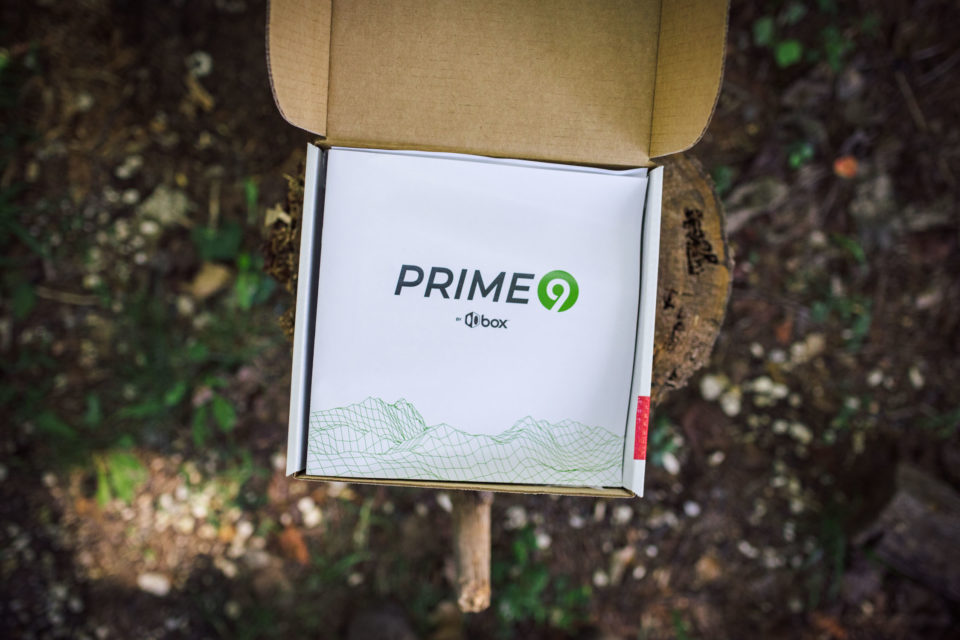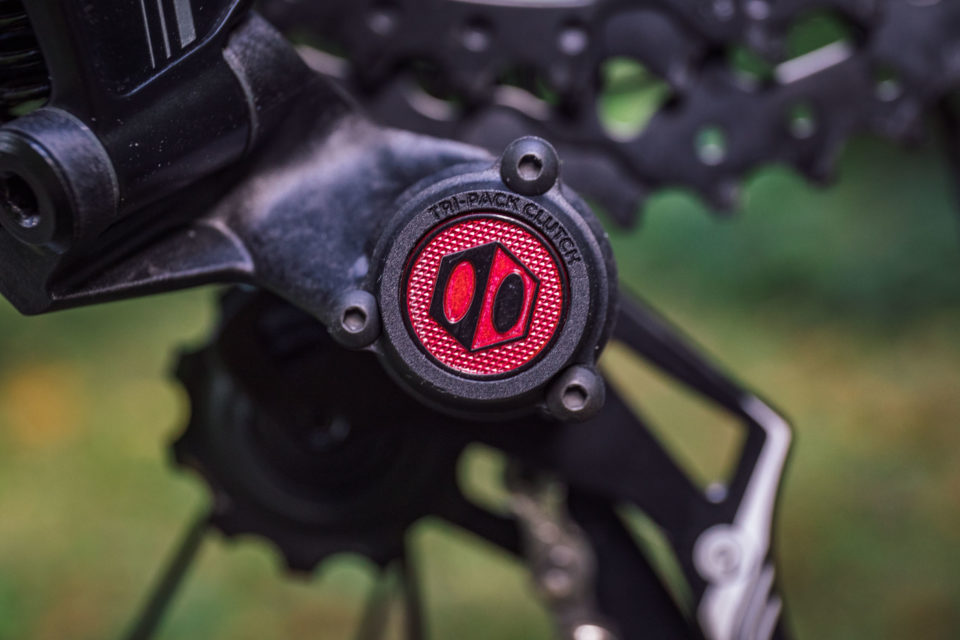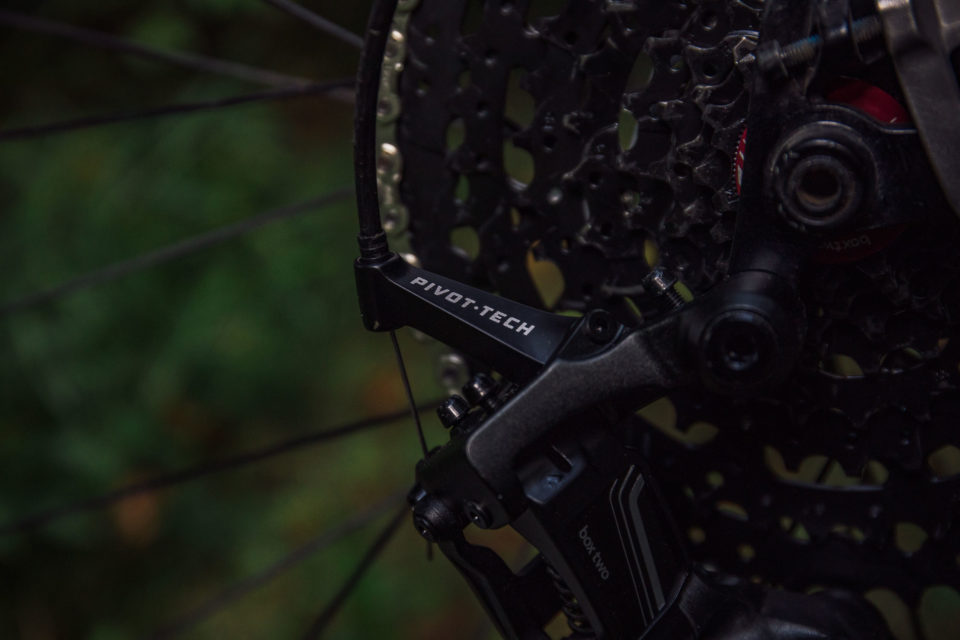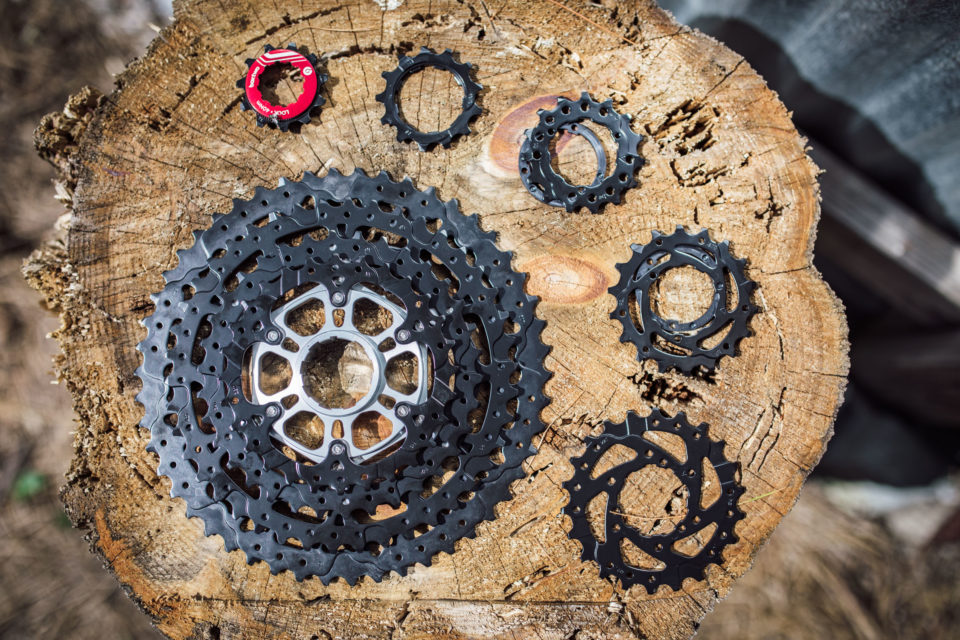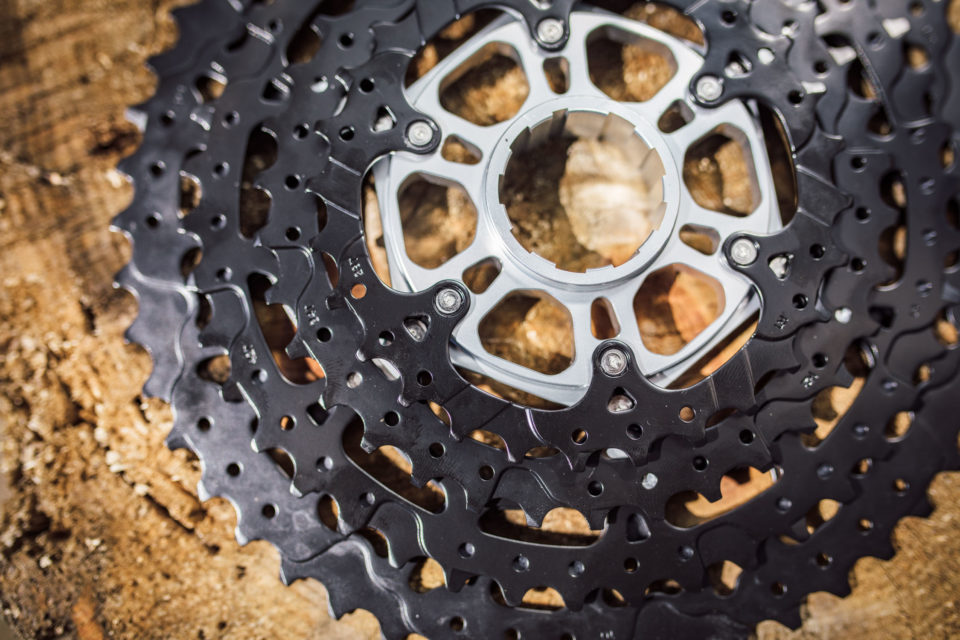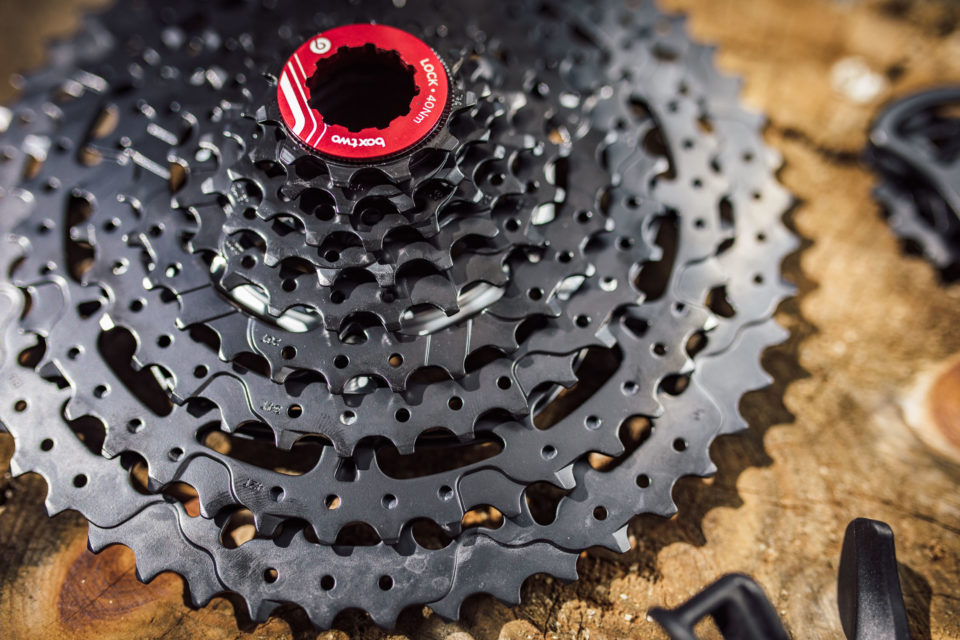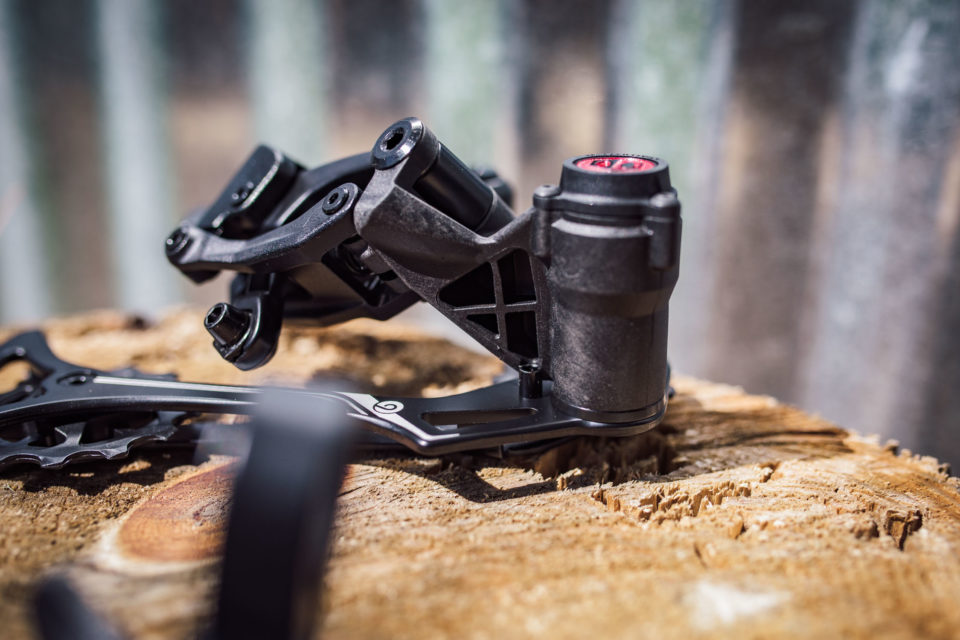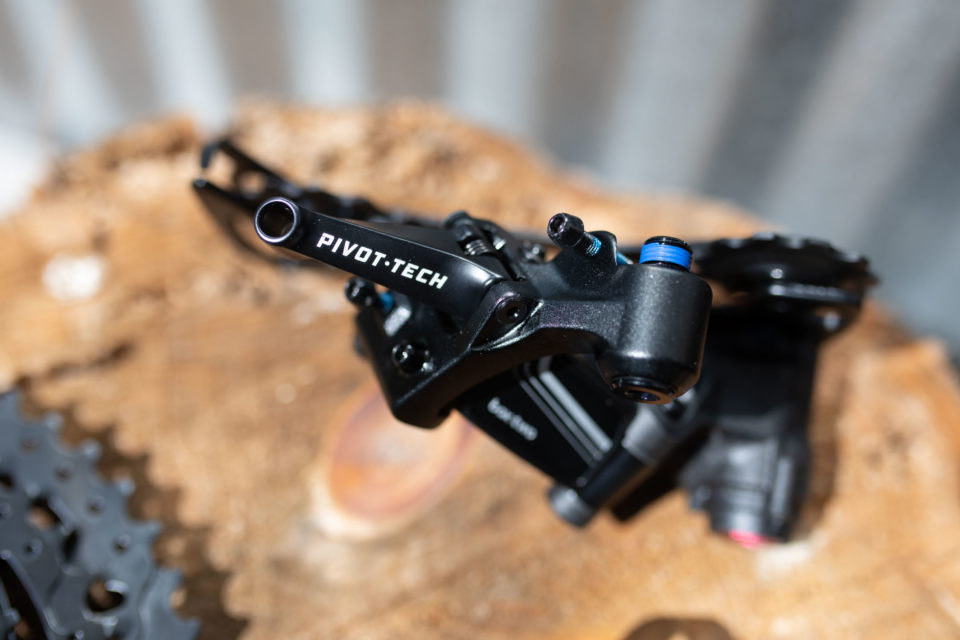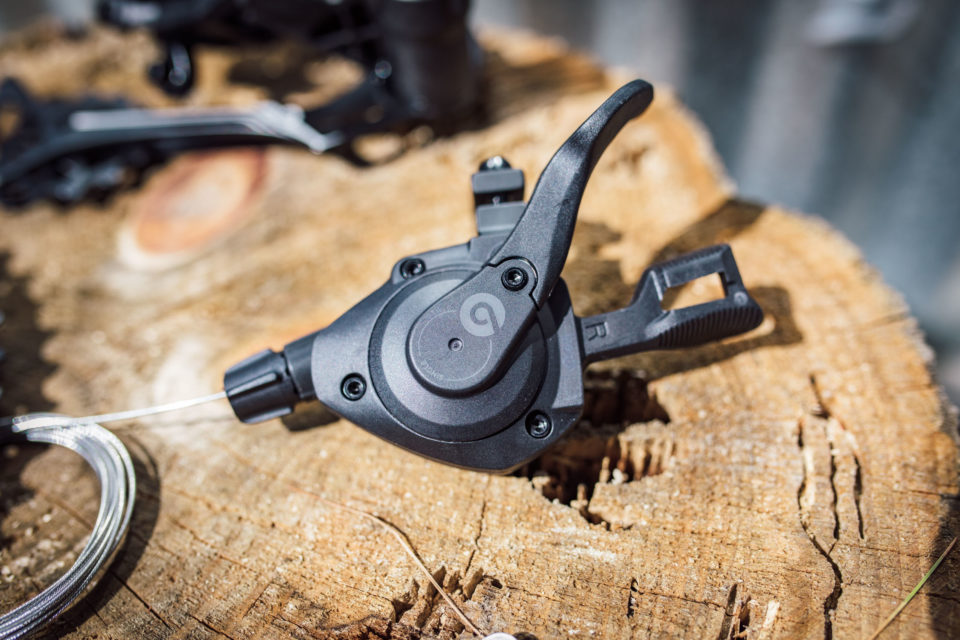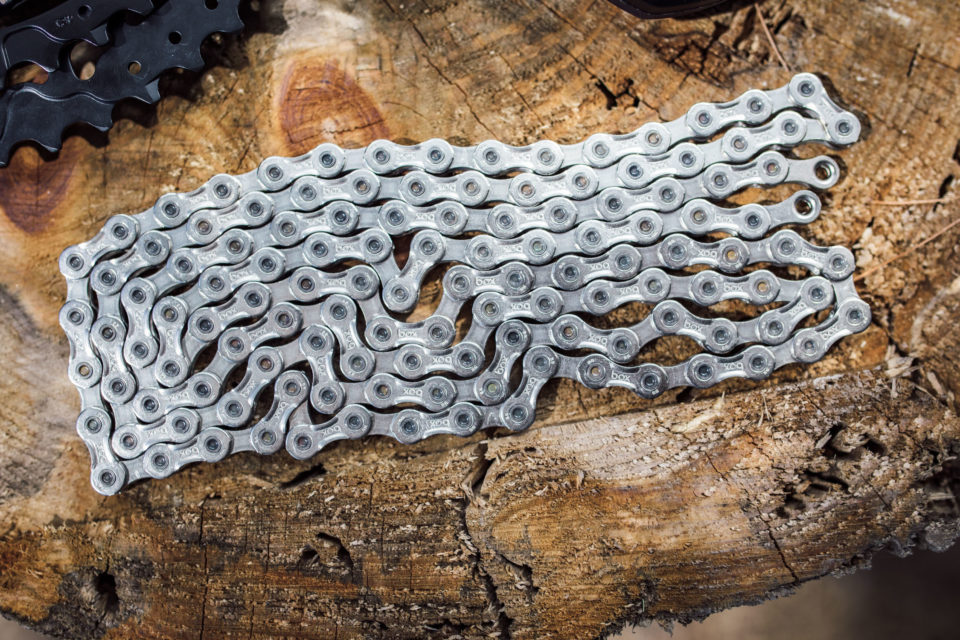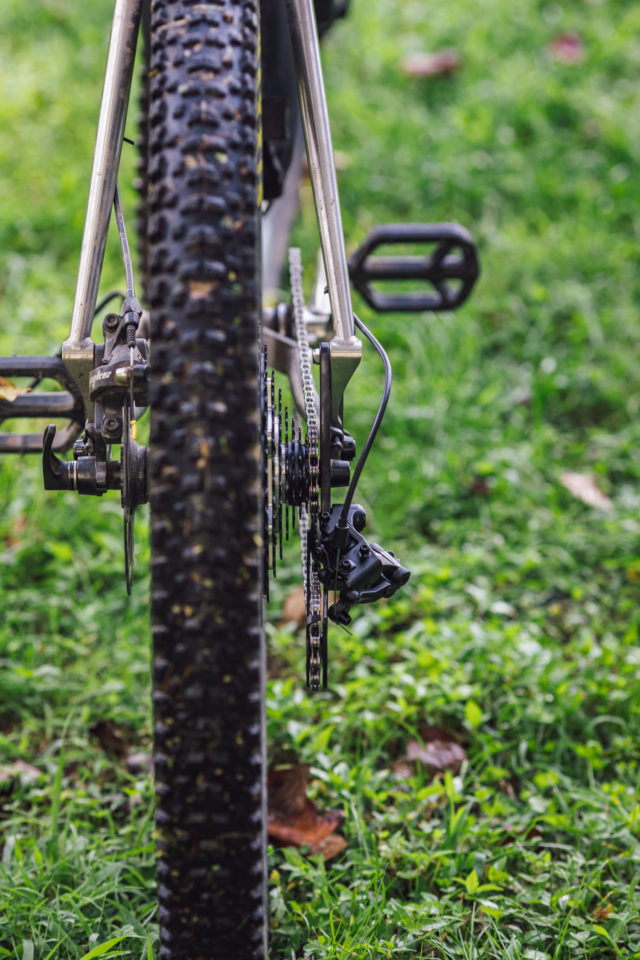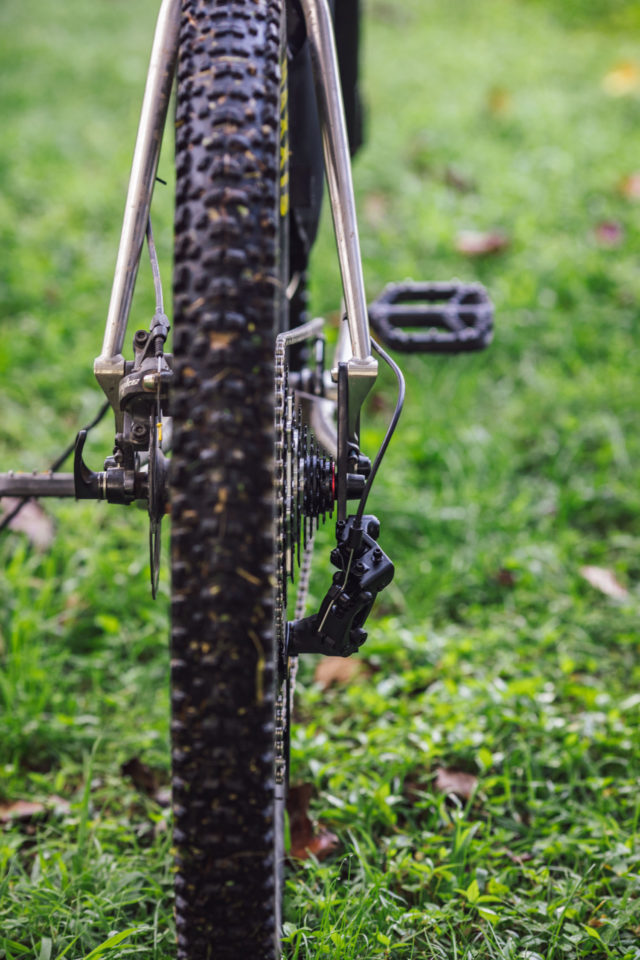Box Prime 9: Wide-Range 1×9 (Eagle for Luddites)
Share This
Featuring a massive 11-50-tooth cassette, the new Box Prime 9 is a budget, wide-range 1×9 drivetrain that promises a narrower chainline, rugged components, and easy to find replacement parts (well, the chain, at least). We had a chance to give it a try prior to today’s launch. Here are our impressions and all the specs…
It wasn’t too long ago when 9-speed was the standard on mountain bikes, touring bikes, and everything in between. Since the late 90s, the typical 3×9 configuration was built around a two derailleurs and an 11-34 cassette. Most mountain bikes were specced with this arrangement well into the mid-2000s. Hell, my first high-end full-suspension carbon mountain bike came with a 3×9 in 2010. Somewhere around then, 2×10 came and went, and 1x began its rise in popularity. Nowadays, 1×12 is being specced on most modern mountain bikes with SRAM and Shimano trading licks to innovate and compete. So why are we talking about 9-speed? Today, California-based Box Components rolled out the Prime 9, a wide-range 1×9 drivetrain aiming to blend the durability and reliability of the traditional 3×9 drivetrain with the simplicity of 1x.
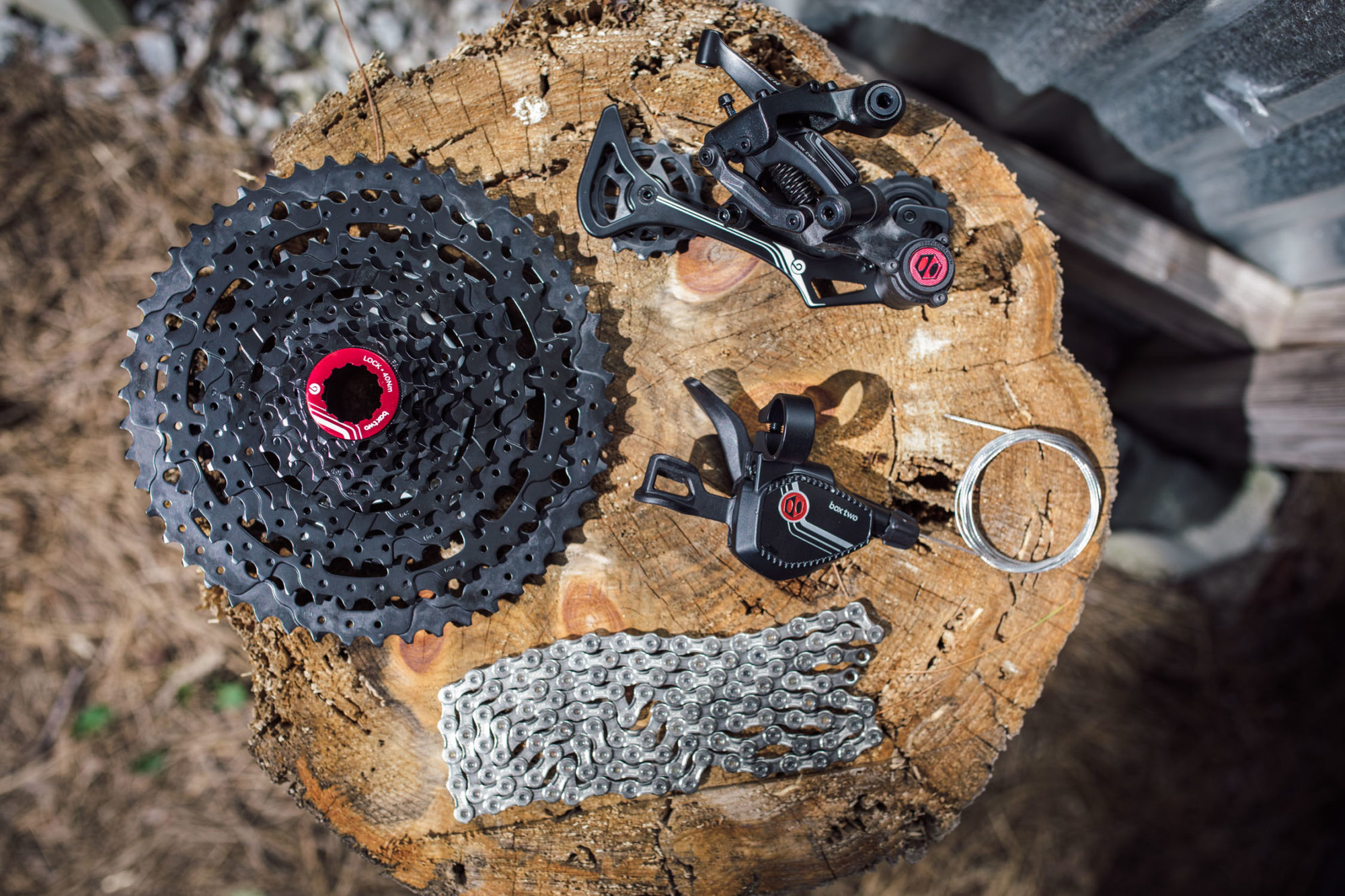
For those unfamiliar, Box Components was officially founded in 2012 by Toby Henderson, an ex-pro BMXer come downhiller from Southern California. Playing on Toby’s industry influence, Box manufactures an array of BMX parts, as well as mountain bike components ranging from stems and handlebars to an 11-speed drivetrain, and even a downhill-specific 7-speed drivetrain. So where does Prime 9 fit in? Vying to push into the SRAM/Shimano dominated drivetrain market, Box Prime 9 is aimed at simplicity. According to the company, Prime 9 is based on the less is more theory. “It embraces range without adding complexity.” The outcome is fewer parts, reduced weight, and according to Box, increased durability. All of those benefits seem to fit right in with bikepacking, so we thought it was worth checking out…
The Box Prime 9 drivetrain comes in three flavors, Box One, Box Two, and Box Three. All three offer an 11-50t cassette designed to work on a standard HG hub driver, the most prevalent freehub body in the industry. Box sent us the Box Two version, which is the definite choice for those on a budget. Compared to the $627 Box One group, Box Two retails for $270 and has a similar derailleur and shifter (lacking a few material upgrades). The biggest difference is the cassette. While they both have a full set of steel cogs, the Box One is almost half the weight and has a unibody construction. But, it’s also $360, vs $100 for the Box Two model. Here’s a table of weights and prices for the Box Two group (as well as Box One, for comparison), followed by a description of each component, our impressions, and pros and cons.
Prime 9 – Box Two (as tested)
- Rear Derailleur ($110) 294 grams
- Cassette ($100) 656 grams
- Shifter ($50) 139 grams
- Chain ($25) 350 grams
Prime 9 – Box One
- Rear Derailleur ($175) 290 grams
- Cassette ($360) 350 grams
- Shifter ($75) 135 grams
- Chain ($50) ? grams
Note that we ignored Box Three, which has a different derailleur design altogether.
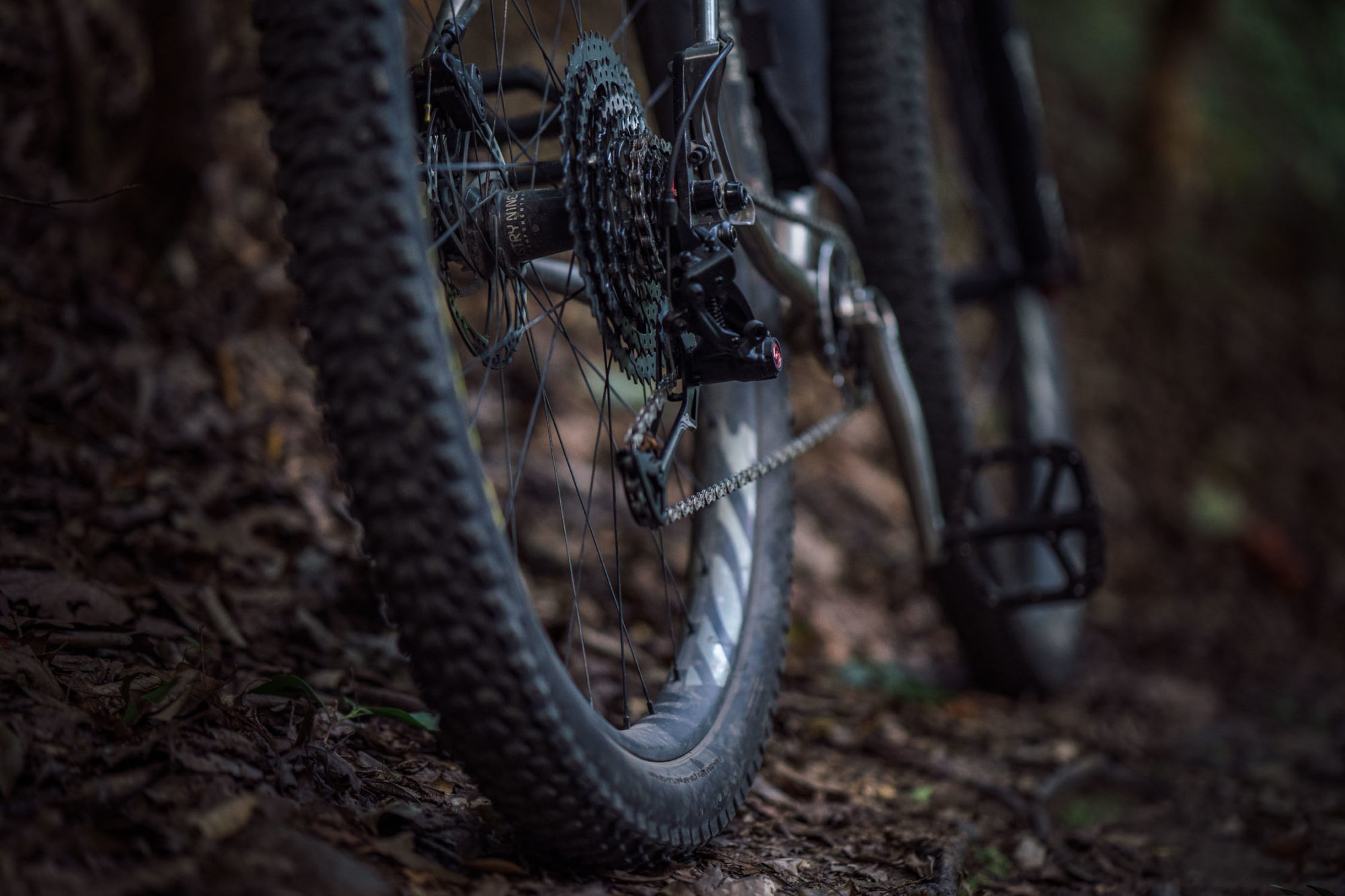
Box Prime 9 11-50t Cassette (Box Two)
Let’s start with the elephant in the room. The chunky 11-50t Box Two Prime 9 cassette features an ultra-wide 454% range, the same range of 12-speed NX Eagle in a narrower package. The cassette is made up of nine hardened alloy steel cogs, and an ED-coated black finish. The four large cogs are pinned to a machined T6 aluminum spider and the others are separate, with two nylon spacers nestled between the middle four. The 11-13-15-18-22-28-34-42-50 tooth progression is fairly consistent, which I’ll talk about more later.
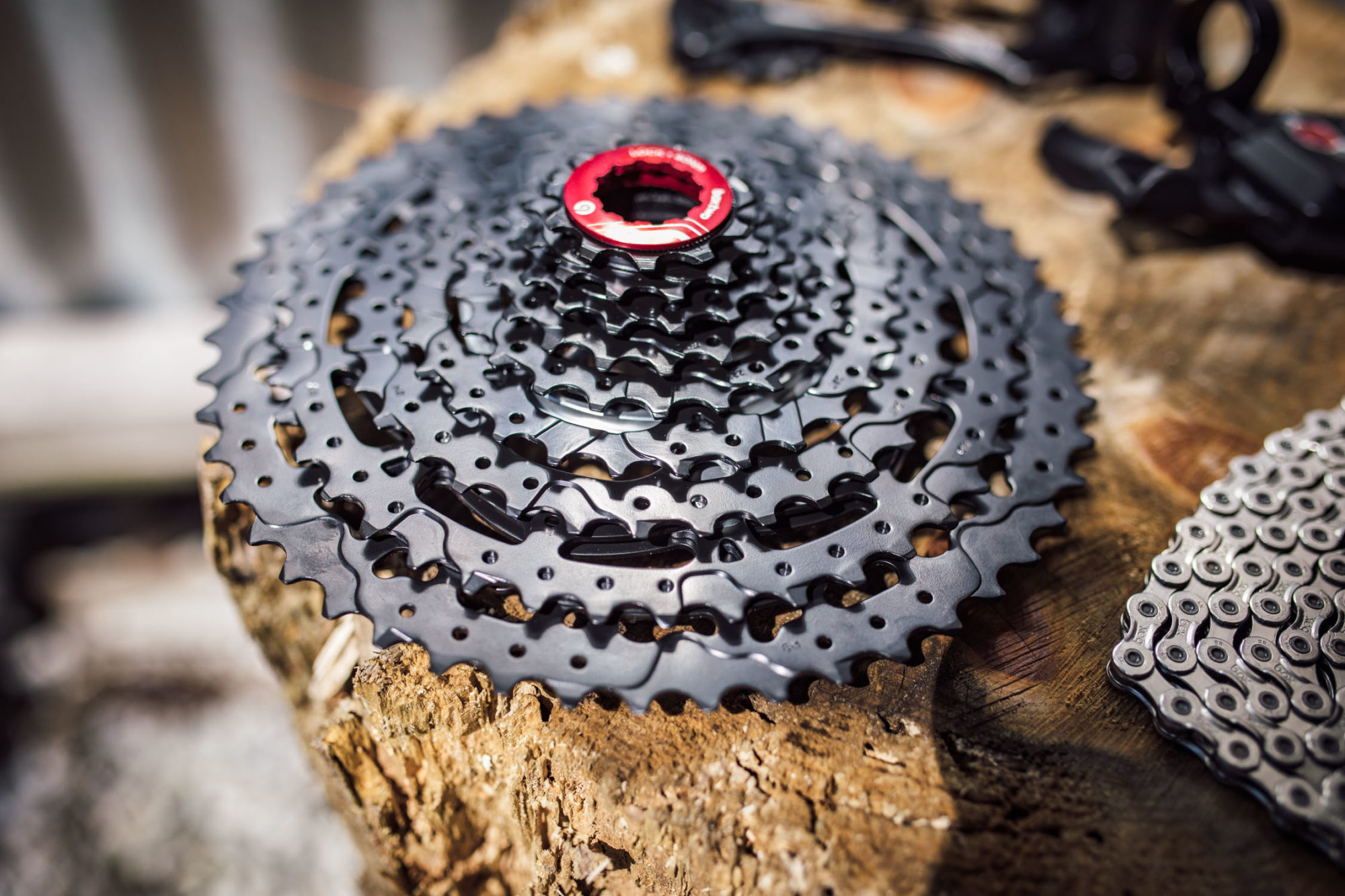
Not only is the $99.99 Box Two cassette inexpensive, Box claims its the most durable out of the three different Prime 9 models. But, that doesn’t come without a cost… this thing is quite heavy. Weighing in on our scales at 656 grams, the Box Two cassette is about 30 grams (give or take) heavier the 12-speed Eagle NX cassette. It would have been nice to see Box come out with something in between the 350 gram Box One version and this. But, even with the stout weight, it’s hard to ignore the benefits: an affordable cassette with a narrower chainline than 1×12 and 1×11, and, it fits on a standard HG freehub body.
Box Prime 9 Derailleur (Box Two)
On first inspection, the Box Two Prime 9 rear derailleur is pretty sturdy feeling. It features a rather long forged inner and outer steel cage, sealed bushing pulleys, forged linkages, a glass fiber/nylon composite rear body, and hardened steel hardware. And of course, the big benefit is that fewer gears add up to a better chain line and less shifting. With that comes decreased wear and a longer derailleur life.

The Box Two Prime 9 derailleur was easy to install, as expected, but I won’t say that it was easy to adjust. But, tuning derailleurs has never been my forte. It took a few attempts adjusting the angle set screw to get it dialed in. This screw essentially pushes against the derailleur hanger and controls the rotation of the derailleur. This was the key to getting all the gears working fluidly.
Under the hood (well, the red cap) is Box’s own tri-pack, limited-slip clutch. The clutch is always engaged, but is user-adjustable with an Allen key. The Pivot-Tech cable-stay is designed to keep the cable at an optimal angle leading into the cable set screw. Like the rest of the group, the Box Two Prime 9 Derailleur is backed by a limited lifetime warranty.
Box Prime 9 Shifter (Box Two)
The Box Two Prime 9 shifter is fairly straightforward. It is constructed with a cast top shell, fiberglass nylon composite body, extruded clamp, two-piece nylon lever, and hardened steel hardware. While Box claims on their website that the shifter can downshift up to three gears per shift, that’s not at all the case. In fact, each press is limited to just one shift. I’m guessing this is a typo and that’s a benefit of the Box One shifter. Apparently, I was using the wrong shifter. There are two versions: one for an e-bike (single-shift), and one for mountain bikes which can downshift up to three gears per shifter press. I missed this fact and had installed the e-bike shifter. I just verified that the MTB version, does in fact perform multiple downshifts.
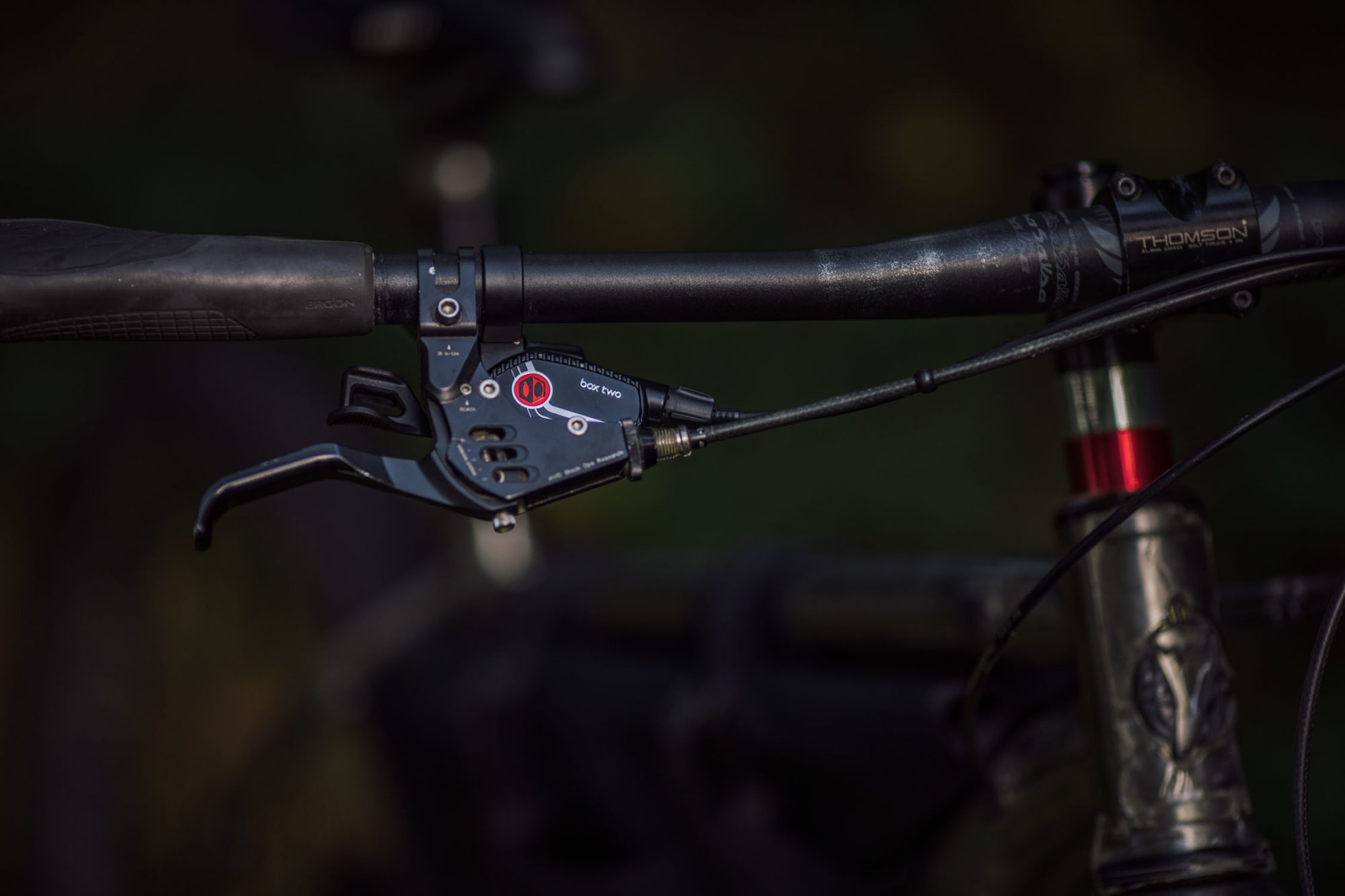
At first, the limited single shift presses were a little odd; I often double and even triple shift when riding trails where the pitches change on a moments notice. However, given the larger steps between gears (after all it’s a wide-range 9-speed), I didn’t find this to be a big deal, even when suddenly facing steep climbs.
Box Prime 9 Chain (Box Two)
One of the main benefits that some of you might appreciate is a stronger 9-speed chain. To others this might be a contradiction given the added weight. However, to this day, 9-speed chains can be found on many adventure-touring bikes, meant to last thousands of miles through all kinds of terrain and weather. For these folks, that reputation for durability trumps the idea of saving a few grams, especially on a part of the drivetrain that’s prone to breakage and wear. And that’s kind of the beauty of the whole system.
All that said, the Box Two Prime 9 chain has a few points of differentiation from typical 9-speed chains. For one, claims it was designed to work with narrow-side chainrings by having the same inner spacing as 11-speed chains. That said, Race Face and other chainring manufacturer clearly state that their narrow-eide rings work with regular 9-speed chains, too. Otherwise, like other 9-speed chains, it features hardened solid pins and is made from hardened alloy steel. The Box Two chain has 126 nickel plated links and weighs about 350 grams.
Box Prime 9 vs. Eagle NX
For comparison’s sake, let’s pit the Box Two Prime 9 against one of the lesser SRAM Eagle groups. Eagle NX also features an 11-50t cassette designed for the standard Shimano HG driver so it shares the same range and fit. Essentially they are about the same price (Eagle NX is actually $5-10 cheaper). And, Eagle NX has a slightly lighter chain and cassette (otherwise, they weigh about the same).
So, why would someone choose 1×9 over 1×12? The answer lies just above… the chain. A 9-speed chain is theoretically more durable. And, it’s likely far easier to replace, should the need arise while out on a big trip. Imagine breaking or wearing out a chain somewhere in east Africa, or in the remote reaches of South America. There’s not a snowball’s chance of finding an Eagle chain in these places. However, finding a 9-speed chain in a small town is far more likely. That can’t be said for an 11-speed chain, and maybe not even 10-speed.
Pros
- Works with
9-speed shiftersand legacy Shimano hub drivers* - Narrower chainline than 11 and 12-speed means less chain wear (6mm narrower than a 12spd cassette)
- Replacement parts, such as a chain
and shifters should be easier to source* - Fewer shifts mean less shifter and derailleur wear and longer life
- Steel casssette offers the promise of long-term durability
- Massive 454% range
- Should work with legacy, 9-speed drop-bar shifters*
Cons
- Cassette is heavy the Box Two model is heavier than Eagle NX
Shifter doesn’t have an easy release clamp (Box two is slide on)Apparently the production version (as shown here) has a hinged clamp.- Might not be enough gear steps for some people’s taste, or for rolling terrain where micro-adjustment is preferable
*Cross Compatibility
Over a week after publication, we finally got some answers from BOX about the compatibility. Unfortunately, there’s not a lot of good news. Here’s what we found out:
Shifter
Legacy 9-speed drivetrains have cable pull ratios that DO NOT match the Box Prime 9 cable pull ratio. As a result, 9-speed shifters outside of Box are not compatible with Prime 9 drivetrains.
Cassette
Prime 9 is based off of 9-speed cassette architecture so shifting performance between the Prime 9 cassette and others is similar; however, the Prime 9 drivetrain is optimized for an 11-50t cassette and derailleur geometry that is not desirable for conventional 11-34 / 11-36 cassettes. Additonally, the use of legacy 9-speed chains may result in dropped chains as the internal geometry is not optimized for modern wide/narrow chainrings (according to chainring manufacturers, such as Race Face, this shouldn’t be that much of an issue).
Chain
Prime 9 Chains have similar external features that make it cross compatible with other 9-speed chains, but the Prime 9 chain uses 11-speed internal geometry to be compatible with modern wide/narrow chainrings. all that said, most legacy 9-speed chains are only available in 114/116 link length configurations and may be too short for optimal setup.
Derailleur
Legacy 9 Speed Drivetrain systems have cable pull ratios that do not match the Box Prime 9 cable pull ratio. As a result, 9-speed derailleurs outside of Box are not compatible with the Prime 9 drivetrains.

- Group tested Box Two Prime 9
- Weight ~1430 grams
- Price $270
- Place of Manufacture Taiwan and China
- Manufacturer’s Details BoxComponents.com
On the Trail + Wrap Up
After setting up the Box Prime 9 drivetrain on my Salsa Timberjack, I’ve gotten two rides on it: one on the local bike path for an afternoon food and beer outing, and another on my tried and true local Pisgah loop, complete with steep, technical climbs, rooty descents, and lots of pitch changes. After recently testing bikes with XTR 12-speed and Eagle X01, I was expecting to be disappointed. However, I was actually kind of impressed. Prime 9 isn’t the smoothest shifting on the market, but it’s not that bad. It can be a little loud shifting into the smaller cogs at times, but not too dissimilar to Eagle GX in the feel of it. The derailleur clutch also seemed to do pretty well, with minimal chain-slap over hearty bumps, even in the smaller cog with a 30t chainring.
I wasn’t left disappointed in the steps between gears, either. As mentioned, I often double and triple shift while trail riding, so the larger gaps made me realize that I might not actually need all those gears. That is, for typical trail mountain biking. I could definitely foresee a little frustration on long, gradual and rolling gravel, where you might typically get caught toggling between two gears to find that comfortable zone. Think the Tour Divide. Even then, if you often stand on the pedals, or come from a single speed background where simplicity is key, this might not be an issue.
The interesting benefits of the Prime 9 system will likely resonate with luddites—I don’t mean that as a negative term. There are a lot of folks in the bikepacking and touring world who put a lot of thought into standards, spare parts, durability, and repairability. And for good reason. I know what it’s like to be stranded in Africa with a broken hub. Had I been using anything but a 100mm quick-release, my trip would have been over. Sourcing parts shouldn’t be ignored for big trips. With that, the Prime 9 might speak to those concerned with to simplicity. Theoretically, this means less wear. And a 9-speed chain should mean easy replacement for those considering a long-distance, trans-Andean journey, or a Cairo to Cape Town trip through Africa.
As you probably assumed, this is more of a first ride than an in-depth review. We’ve only had the Box Prime 9 for a week or so. I’ll be sure to update this down the road once it has more miles on it, or should I find an flaws or concerns. I also have a couple questions out to Box about the difference in chainline, as well as Prime 9’s compatibility with legacy 9-speed shifters. Stay tuned for an update…
Please keep the conversation civil, constructive, and inclusive, or your comment will be removed.













